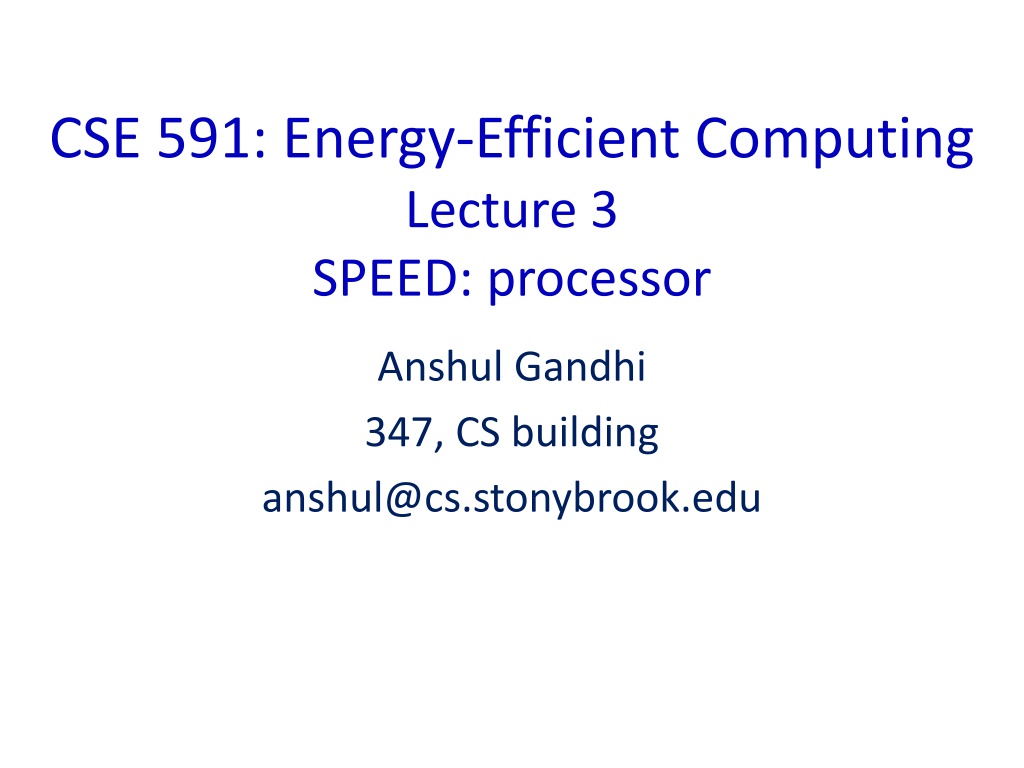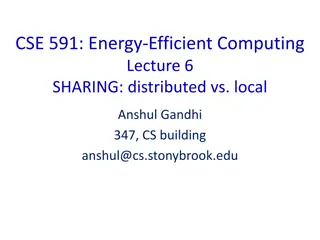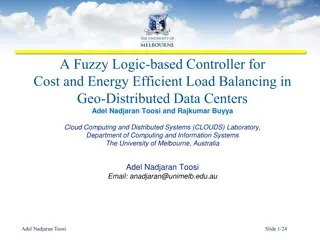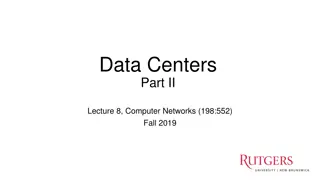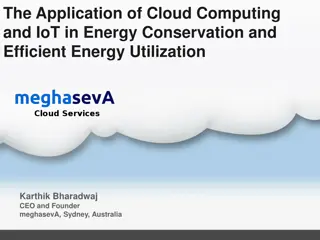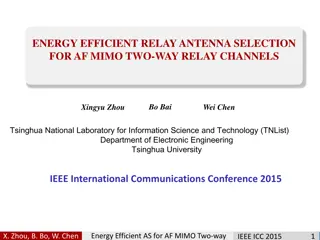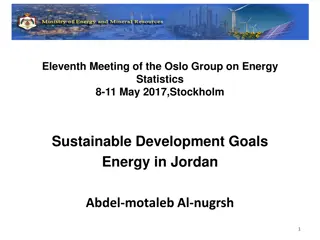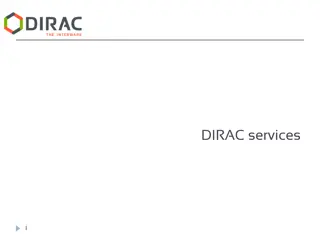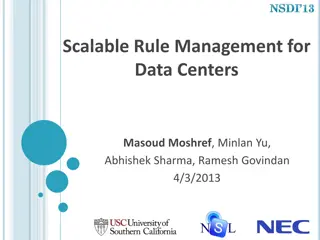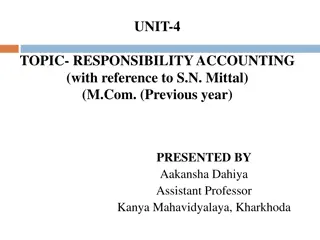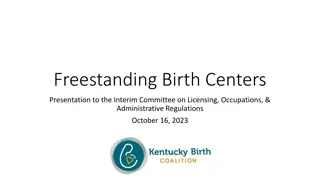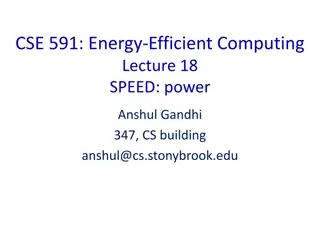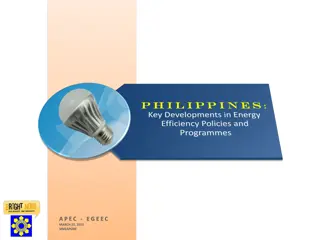Energy-Efficient Computing Strategies for Data Centers
This content covers lectures on energy-efficient computing, focusing on optimizing processor performance, minimizing response times, and power allocation strategies in data centers. It explores the relationship between power consumption and server speed, providing experimental results and insights on maximizing performance while minimizing energy consumption.
Download Presentation

Please find below an Image/Link to download the presentation.
The content on the website is provided AS IS for your information and personal use only. It may not be sold, licensed, or shared on other websites without obtaining consent from the author. Download presentation by click this link. If you encounter any issues during the download, it is possible that the publisher has removed the file from their server.
E N D
Presentation Transcript
CSE 591: Energy-Efficient Computing Lecture 3 SPEED: processor Anshul Gandhi 347, CS building anshul@cs.stonybrook.edu
U.S. Data Center Energy Consumption 120 billion kWh kWh (in billions) 100 80 50 billion kWh 60 $ 8.4 billion 40 12 billion kWh 20 0 2000 2006 2011 Source: EPA report to Congress on Server and Data Center Energy Efficiency ,2007 3
Goal Get the best performance from the power, P, that we have. Data Center P 4
Goal How to split P to minimize mean response time? Right answer can improve performance by up to 5X P1 P P2 P3 Constraint: P P1 + P2 + P3 5
Our Experimental Results How power affects server speed for a single server DFS: Dynamic Frequency Scaling s = + ( ) s s P P Frequency (GHz) min min (server speed) DFS linear P = system power NOT processor power s min P Power (Watts) P 6 min
Our Experimental Results How power affects server speed for a single server Frequency (GHz) Frequency (GHz) Frequency (GHz) DVFS DVFS +DFS LINPACK CPU BOUND DFS Power (Watts) Power (Watts) Power (Watts) Frequency (GHz) Frequency (GHz) Frequency (GHz) DVFS DVFS +DFS DFS STREAM MEM BOUND Power (Watts) Power (Watts) Power (Watts) 7
Power Allocation Results CPU bound LINPACK Memory bound STREAM THEOREM THEOREM If If : : speed speed scaling scaling is is linear linear and and s s min min steep steep , , then then PowMax PowMax is is optimal. optimal. DFS P P min min DVFS DVFS+DFS Frequency (GHz) DFS min s Power (Watts) P 8 min
Power Allocation Results THEOREM THEOREM If If : : speed speed scaling scaling is is linear linear CPU bound LINPACK Memory bound STREAM s s min min and and flat flat , , then then P P DFS min min PowMax PowMax is is optimal optimal for for P DVFS PowMin PowMin is is optimal optimal for for P DVFS+DFS Frequency (GHz) DVFS . P Power (Watts) 9
Power Allocation Results CPU bound LINPACK Memory bound STREAM THEOREM THEOREM If If : : speed speed scaling scaling is is cubic, cubic, then then PowMax PowMax is is optimal optimal for for DFS 0 PowMed PowMed = is is optimal optimal ( max P for for 0 DVFS ) 2 P 3 3 P P P 0 min knee min P P DVFS+DFS max knee Frequency (GHz) DVFS +DFS Power (Watts) 0 10
Power Allocation Results DFS CPU bound LINPACK Memory bound STREAM Mean Resp. Time (sec) DFS DVFS DVFS+DFS Arrival rate (jobs/sec) DVFS DVFS+DFS Mean Resp. Time (sec) Mean Resp. Time (sec) Arrival rate (jobs/sec) Arrival rate (jobs/sec) 11
Conclusions: How to allocate power optimally Speed Scaling? Linear, Steep Linear, Flat Cubic Arrival Rate? Arrival Rate? Arrival Rate? High Low Low High High Low PowMax PowMax PowMax PowMin PowMax PowMed 12
